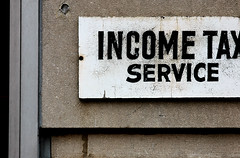It might have seemed like a simply marvelous idea at the time, but lots of people who did the ROTH IRA conversion are having a bear of a time getting it all sorted out on their income tax returns. If you’re one of those people, hopefully this will help.
I’m going to tell you where the numbers should show up on the form. If you know where things are supposed to go, then you’ll know if it’s right or not. Quite frankly, the most difficult part for me has been using the computer software to get the numbers to go in the right place.
Let’s run a few different scenarios, all using a rollover of $15,000. In all of the scenarios, you’re going to use form 8606 to let the IRS know that you did a ROTH conversion instead of just taking the money out and spending it. This will keep you from being charged the 10% penalty for early withdrawal.
In our first example, you’re rolling over $15,000 from a traditional IRA and you have no basis (meaning you didn’t pay taxes on any of the $15,000.) Down near the bottom of the first page of the 8606 is Part II, the section about ROTH IRA conversions. Question 16 wants to know the amount that you converted: that’s $15,000. Line 17 will be blank, line 18 will be the taxable amount of $15,000. Lines 19 and 20 are based upon if you’re paying the tax in 2010 or if you’re splitting it between 2011 and 2012. If you’re paying the tax this year, then you’ll have the number 15,000 on line 15b of your 1040 form. If you’re putting off paying until next year, then that line will be blank.
One of the questions I’ve been asked is, “If I don’t pay the tax this year, how does the IRS know that I’m supposed to pay it next year?” Line 20. Rest assured, anyone with numbers in lines 20a and 20b will have their returns looked at during the next two years to see if they remembered to pay the tax. I guarantee it.
Our second example still has you rolling over $15,000 and that’s all the money you have in your IRA. What’s different is that you paid taxes on $5000 of that money. Just like before you put 15,000 on line 16, but now you put $5000 basis on line 17. That makes the taxable amount only $10,000. You decide about whether to pay now or later.
Our third scenario is a little trickier. You’re still rolling over $15,000 and your basis is $5,000—the difference this time is that you have a total of $60,000 total in your IRA. Unlike the above example, you can’t just deduct the $5,000 of basis from what you rollover, it has to be proportional to your total IRA amount. 5000/60,000 equals 8.33%. That percentage of 5000 is $417. You’ll put $15,000 on line 16 for the rollover, $417 on line 17 for the basis. That means that the taxable amount on line 18 will be $14,583. (I know, it doesn’t sound as good as the other scenarios does it?) Don’t forget that you still have $4,583 in basis to use if you do any conversions in the future.
And our last scenario, you have $5,000 in basis from before and you made a $5000 non-deductible IRA contribution this year. The $15,000 is your entire IRA. This time, you also have to fill out Part 1 of form 8606. On line 1 you will put $5,000—the contribution you made this year. On line 2 you will put $5,000 the basis you had before. One line 3 your add them together for $10,000. Then you’re going to skip down to Part 2 (unless you had SEP and SIMPLE IRAs) and put $15,000 on line 16. Your total basis will be $10,000 on line 17, and your taxable conversion will be $5,000.
Knowing what form you need and where the numbers go is only half the battle. Getting the numbers to go where they’re supposed to go using computer software can be more challenging than doing it by hand. If you’re using brand name software like Turbo Tax, you can call their expert hotline for help.
_______________________________________________________________________
Note: We try to answer all the questions that come to us but please be patient. It’s our busy season right now. We may not get to your post until the weekend. When you make a post and use the capcha code, it won’t immediately show up. You see, for every normal person like you that posts, there’s about three advertisements for things your mother wouldn’t approve of. (We try to keep this a G rated website.) We have to edit those out. If you need an answer right away, here are some links that might help:
EIC questions of any kind: http://www.irs.gov/Individuals/Earned-Income-Tax-Credit-(EITC)-%E2%80%93–Use-the-EITC-Assistant-to-Find-Out-if-You-Should-Claim-it.
How to find free tax preparers: http://www.irs.gov/Individuals/Free-Tax-Return-Preparation-for-You-by-Volunteers
How to find your local IRS office: http://www.irs.gov/uac/Contact-Your-Local-IRS-Office-1
If you want to hire us, please call (314) 275-9160 or email us. We do prepare returns for people all over the country (and a few foreign countries as well.) We are sorry but we cannot prepare an EIC return for someone outside of the St. Louis area because of the due diligence requirements.









